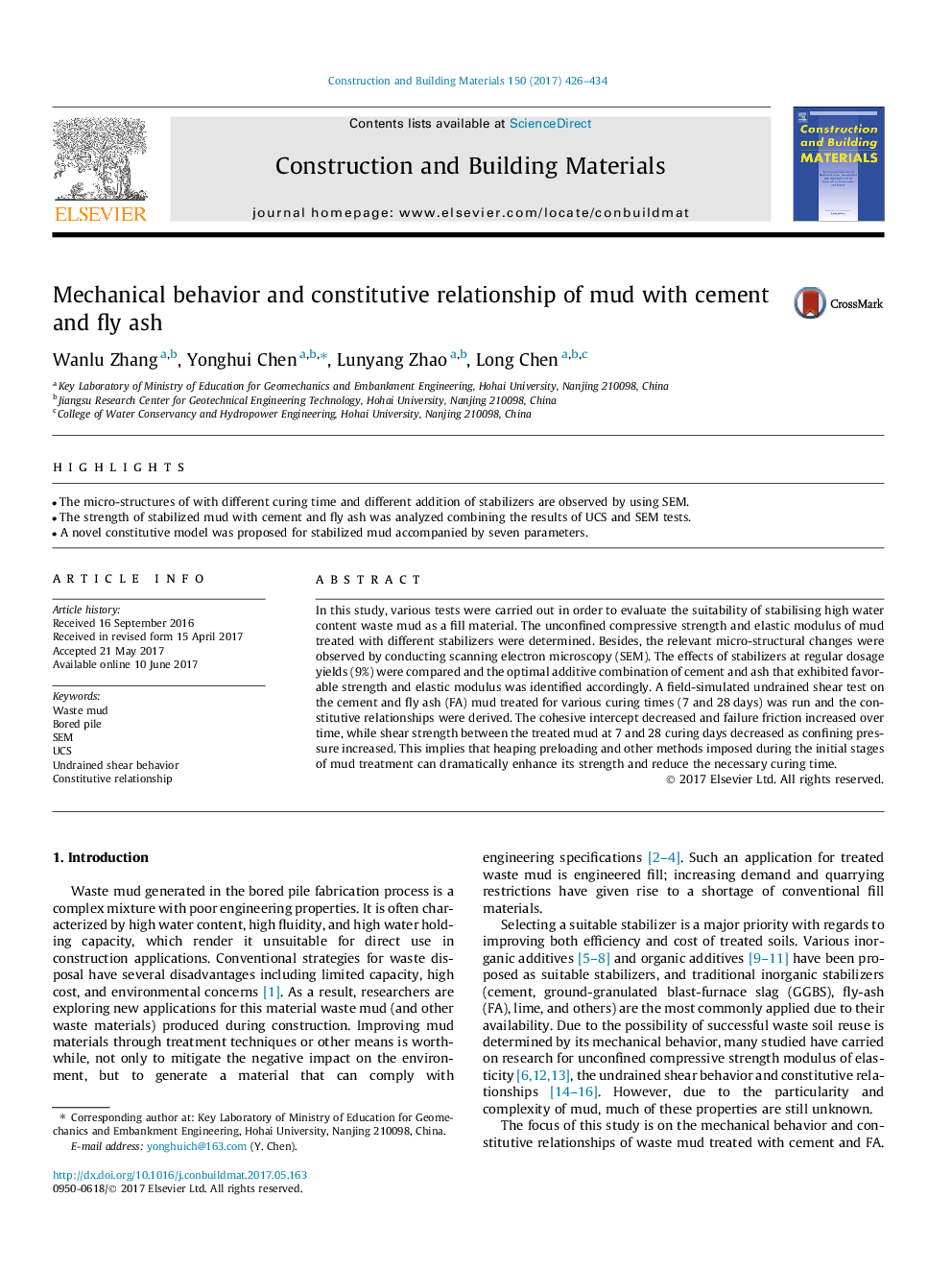| Article ID | Journal | Published Year | Pages | File Type |
|---|---|---|---|---|
| 4918297 | Construction and Building Materials | 2017 | 9 Pages |
Abstract
In this study, various tests were carried out in order to evaluate the suitability of stabilising high water content waste mud as a fill material. The unconfined compressive strength and elastic modulus of mud treated with different stabilizers were determined. Besides, the relevant micro-structural changes were observed by conducting scanning electron microscopy (SEM). The effects of stabilizers at regular dosage yields (9%) were compared and the optimal additive combination of cement and ash that exhibited favorable strength and elastic modulus was identified accordingly. A field-simulated undrained shear test on the cement and fly ash (FA) mud treated for various curing times (7 and 28Â days) was run and the constitutive relationships were derived. The cohesive intercept decreased and failure friction increased over time, while shear strength between the treated mud at 7 and 28 curing days decreased as confining pressure increased. This implies that heaping preloading and other methods imposed during the initial stages of mud treatment can dramatically enhance its strength and reduce the necessary curing time.
Related Topics
Physical Sciences and Engineering
Engineering
Civil and Structural Engineering
Authors
Wanlu Zhang, Yonghui Chen, Lunyang Zhao, Long Chen,
